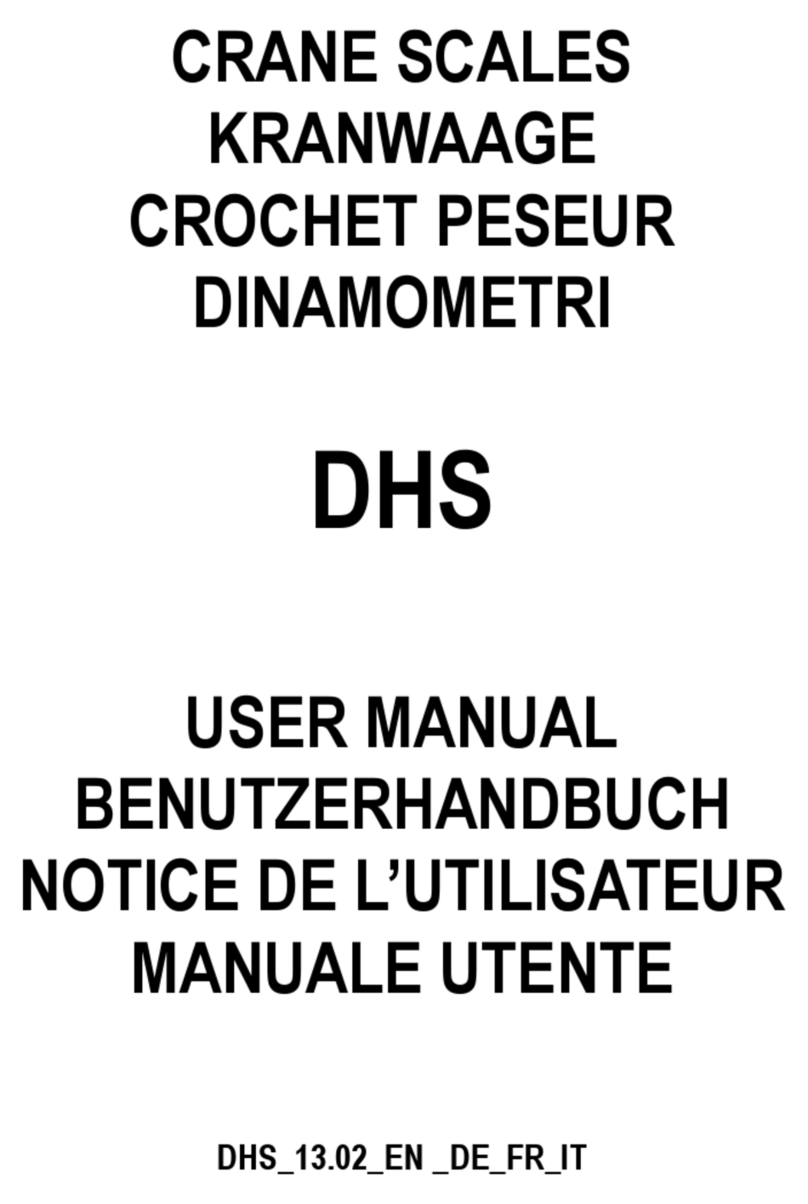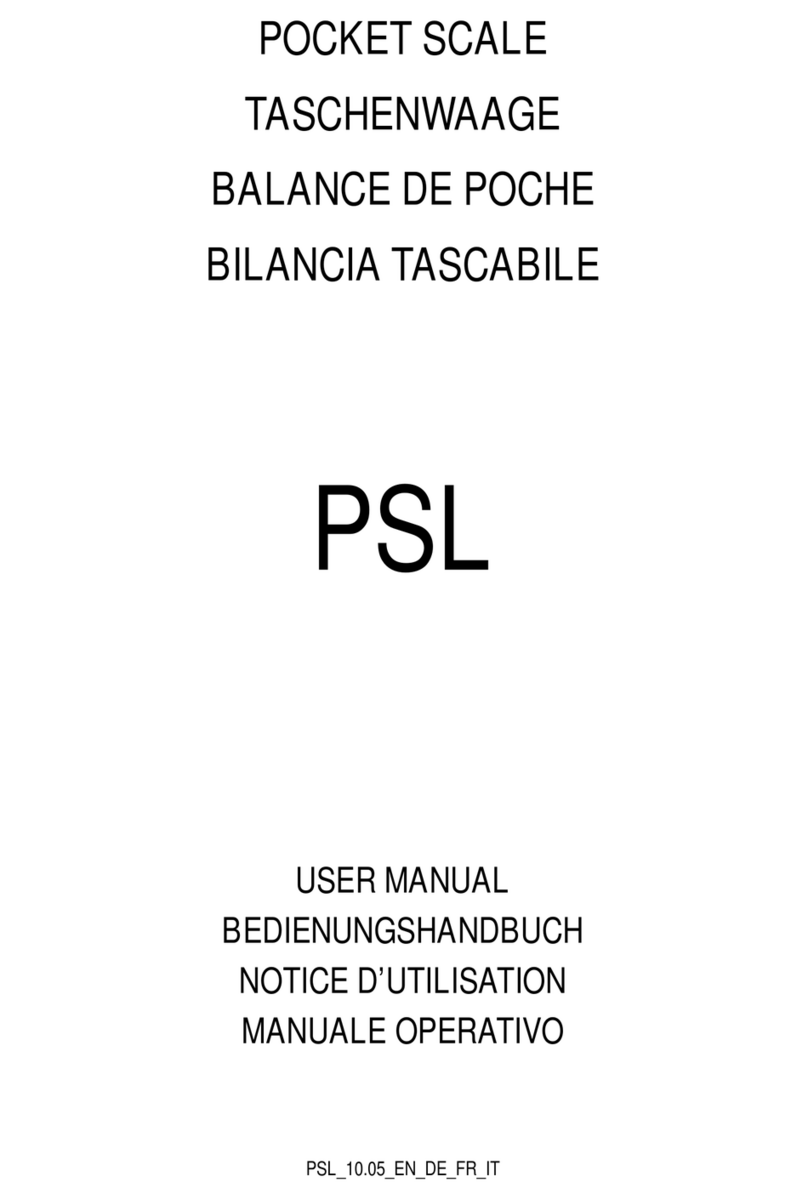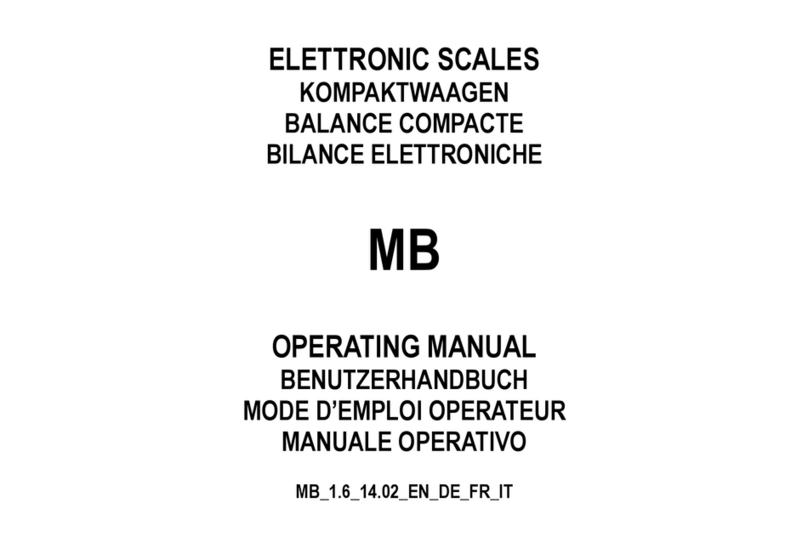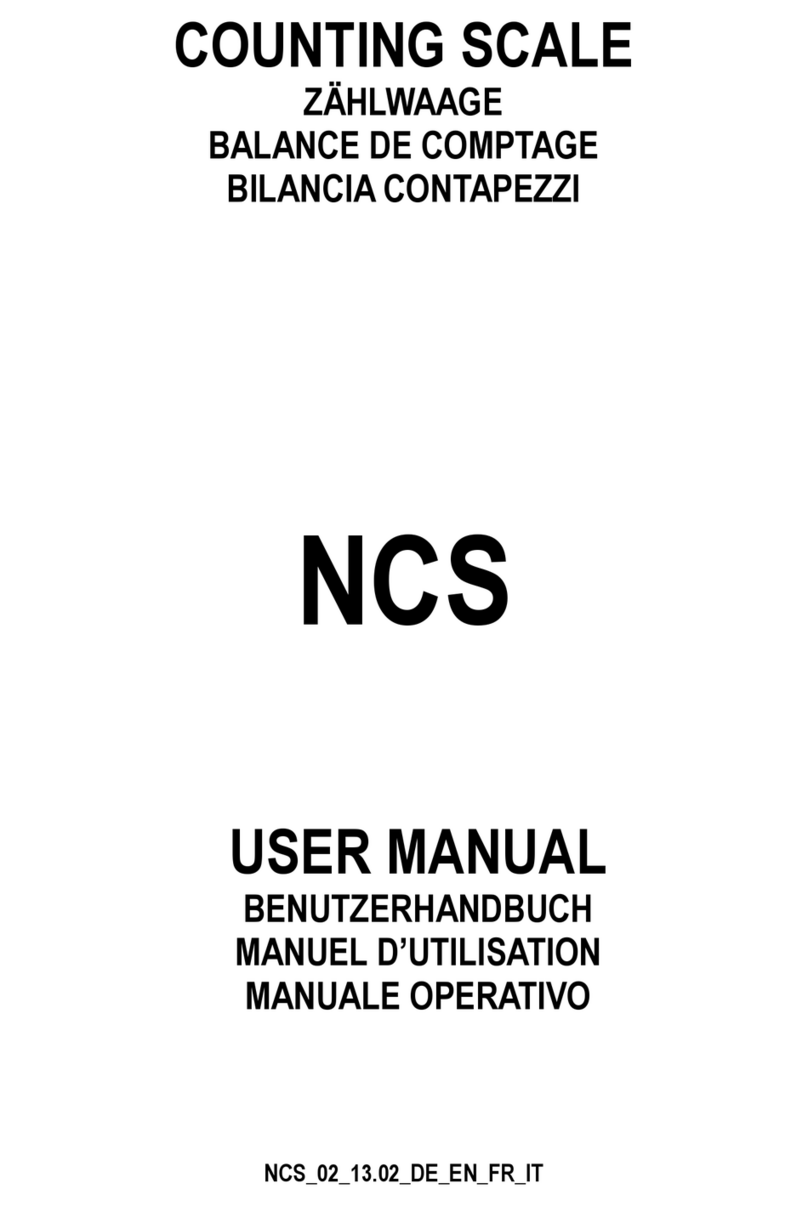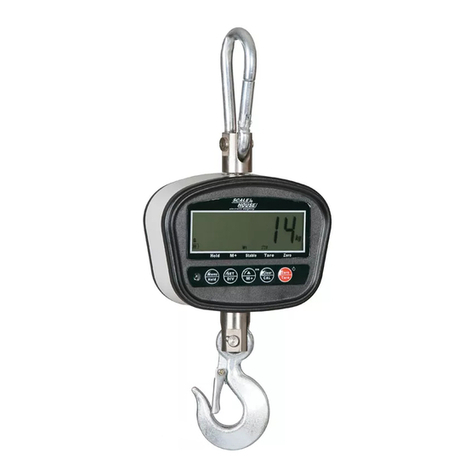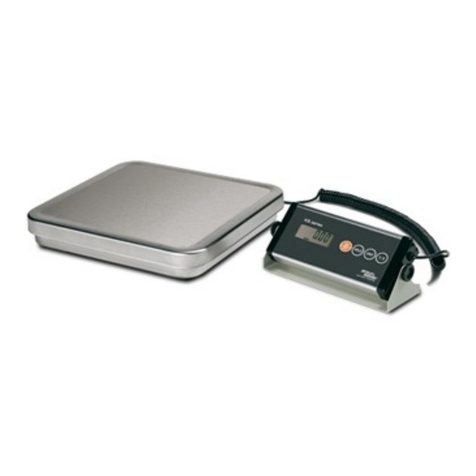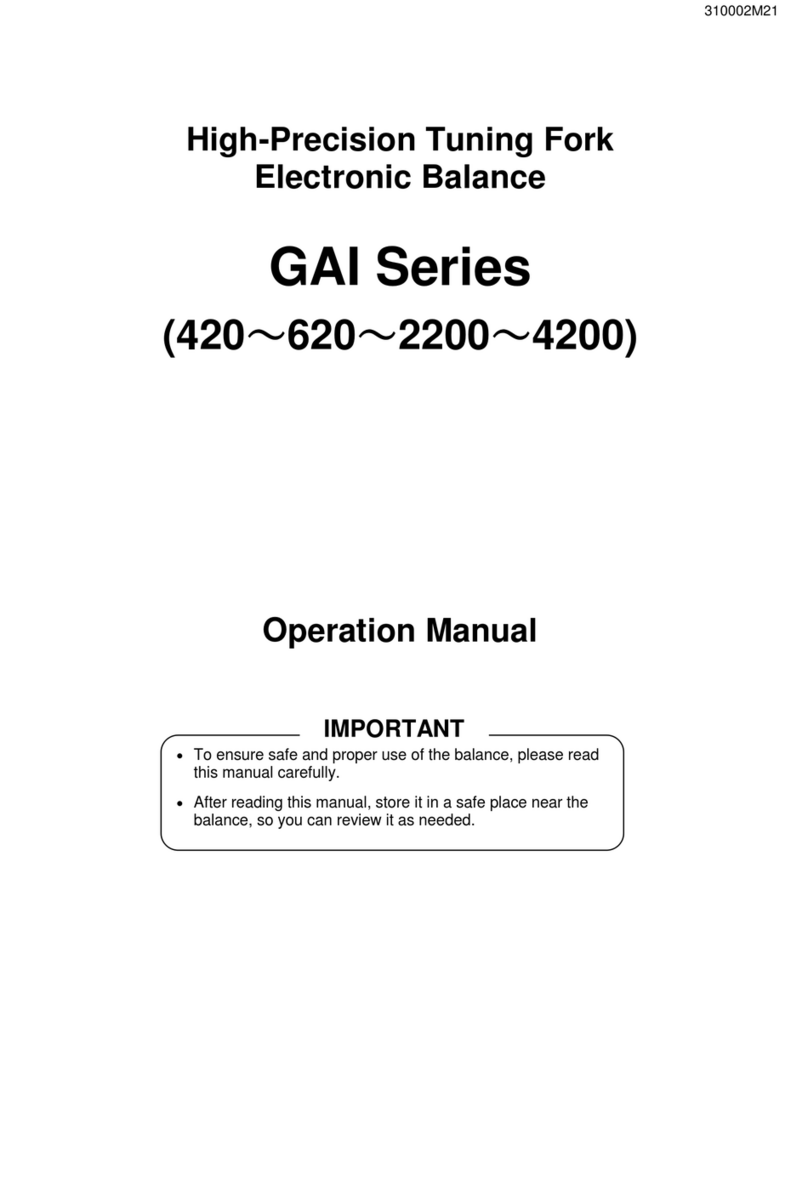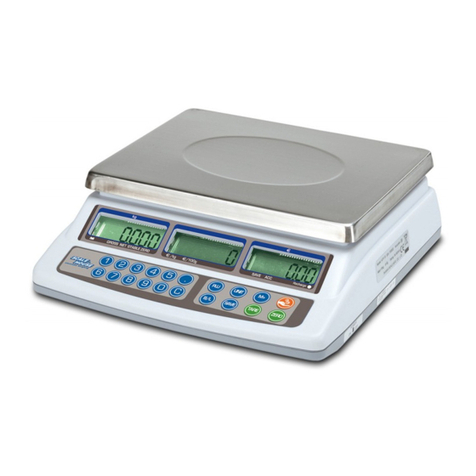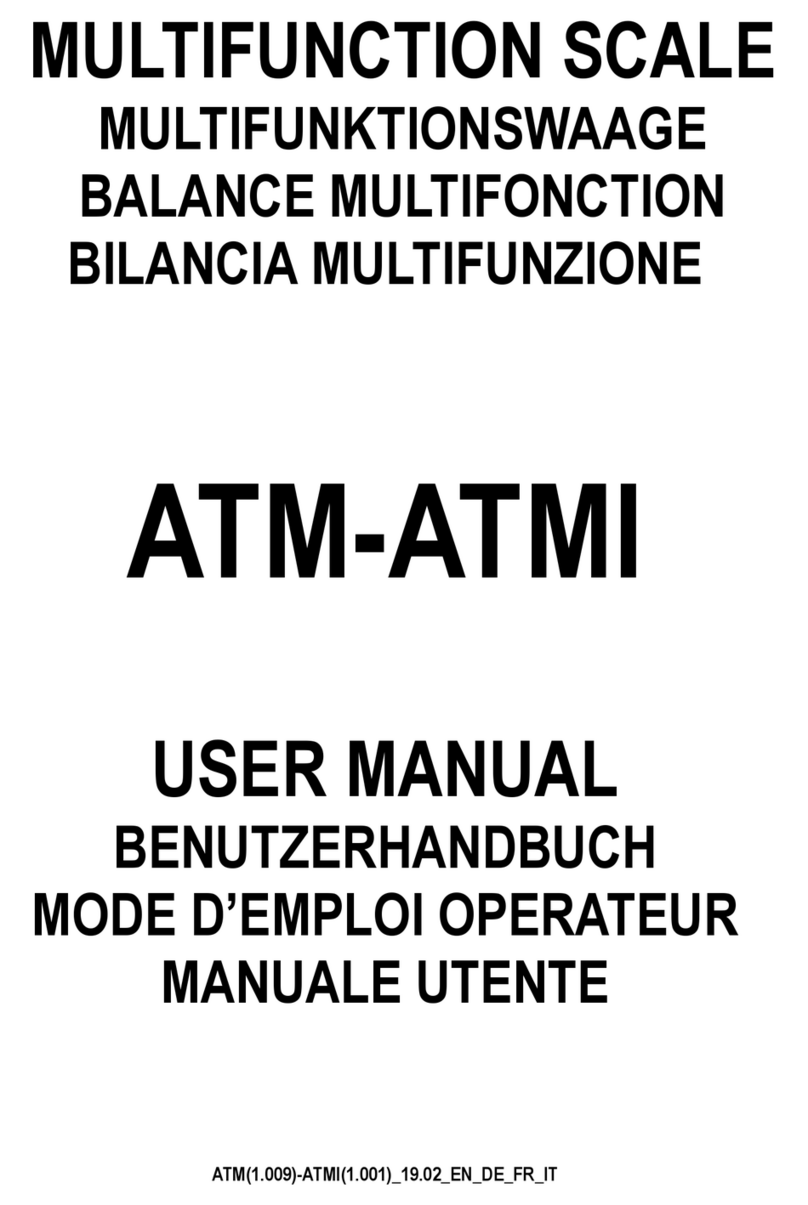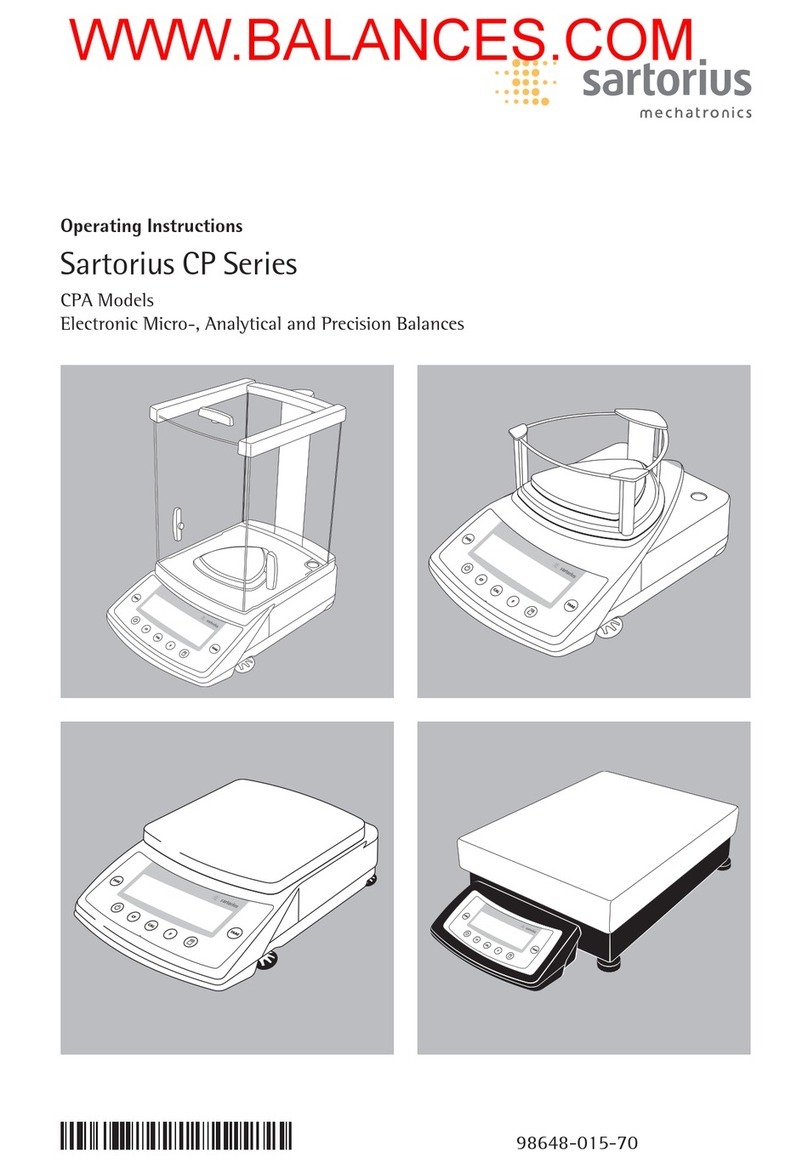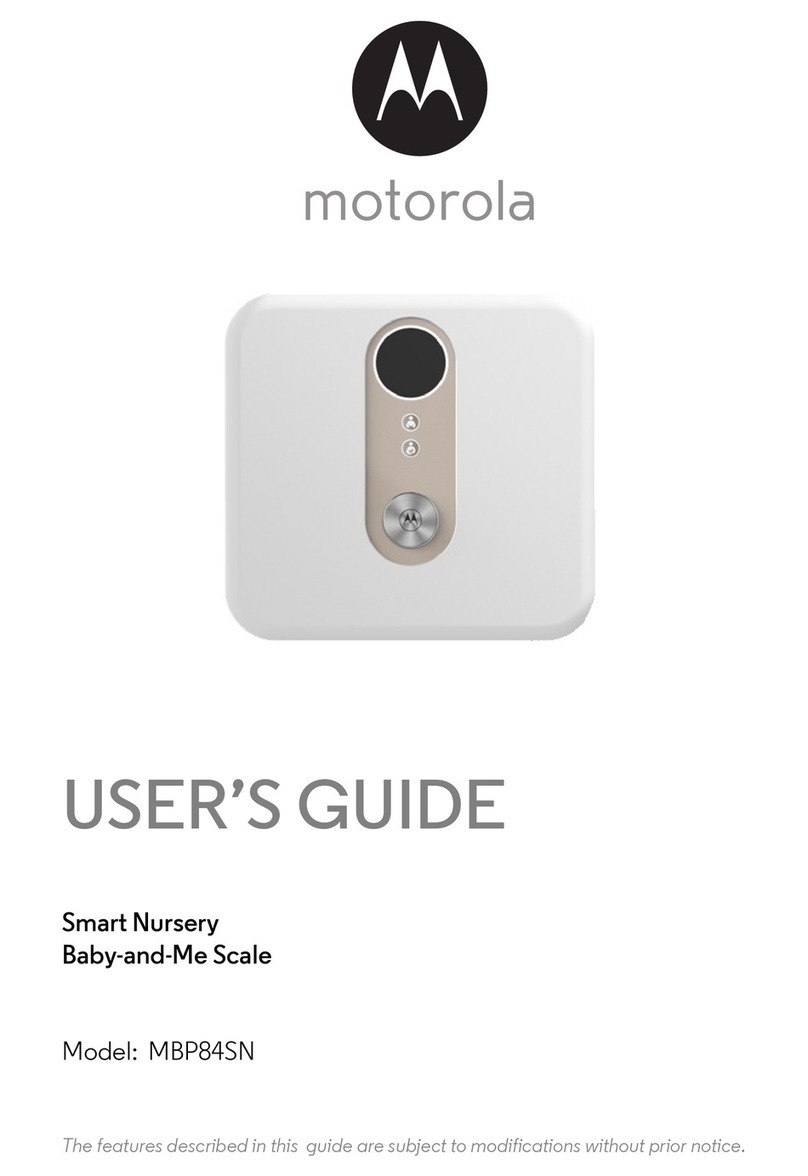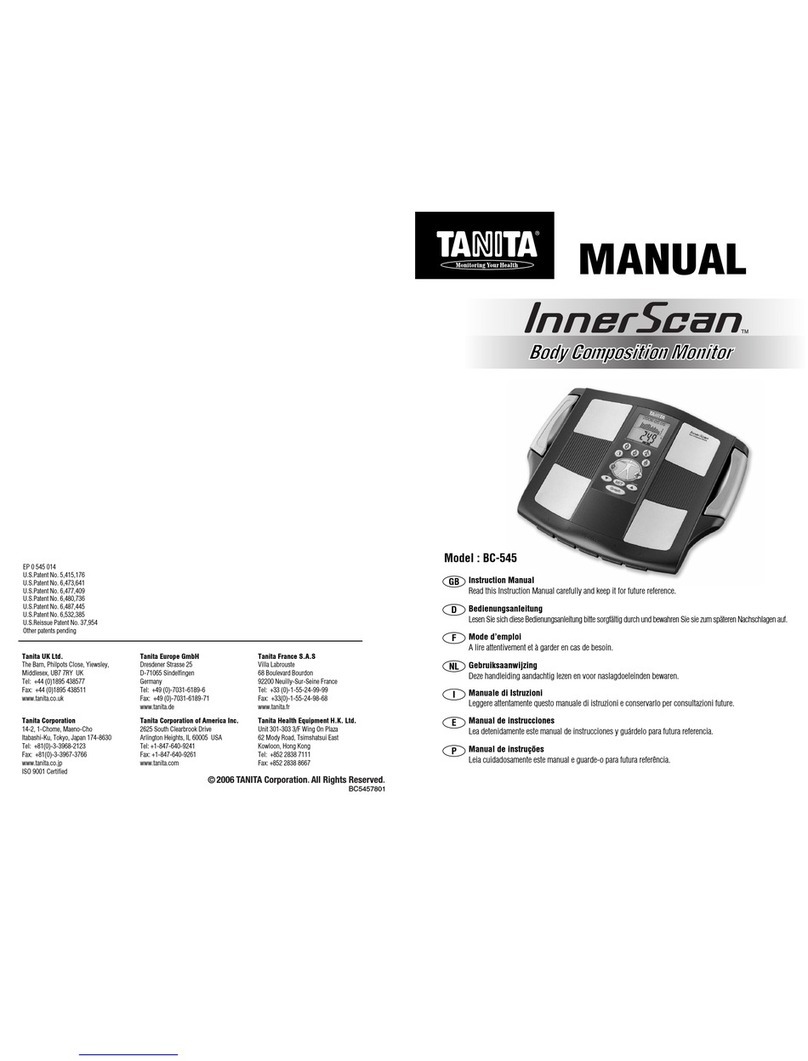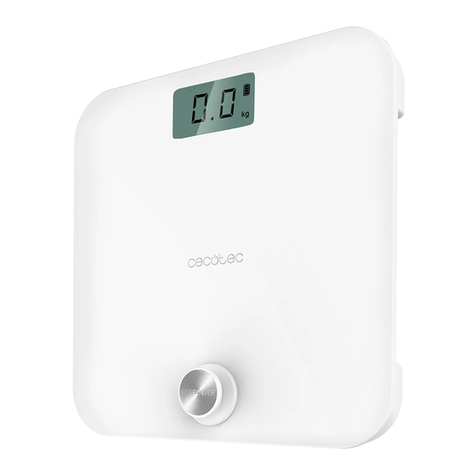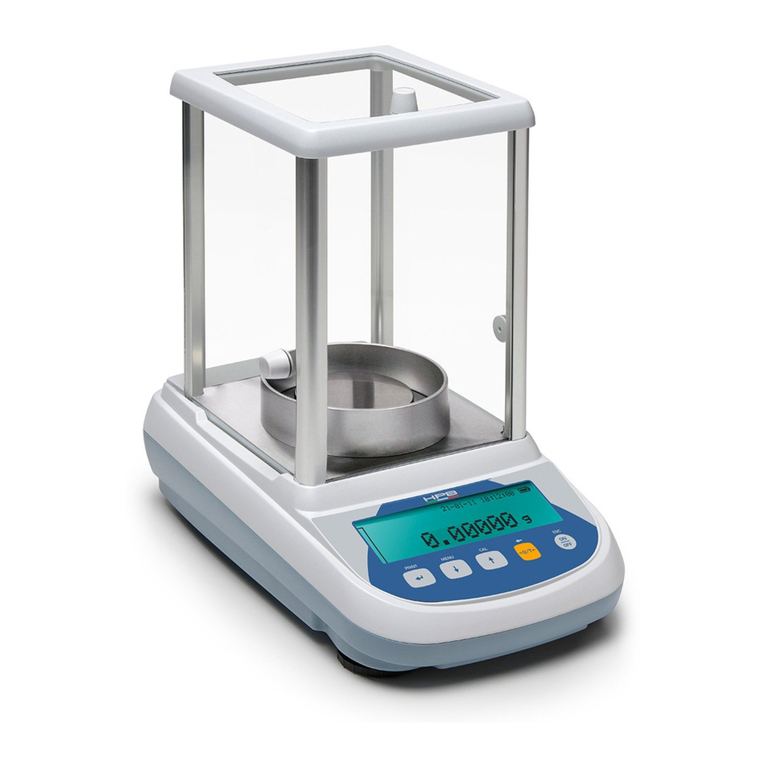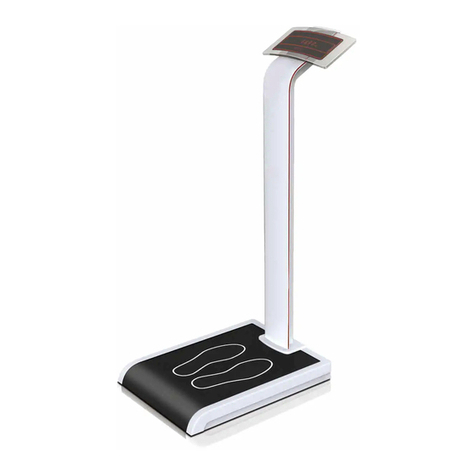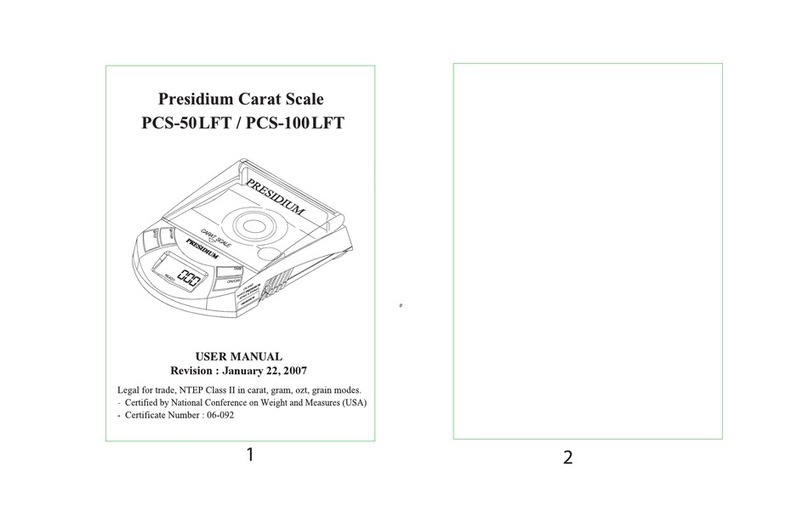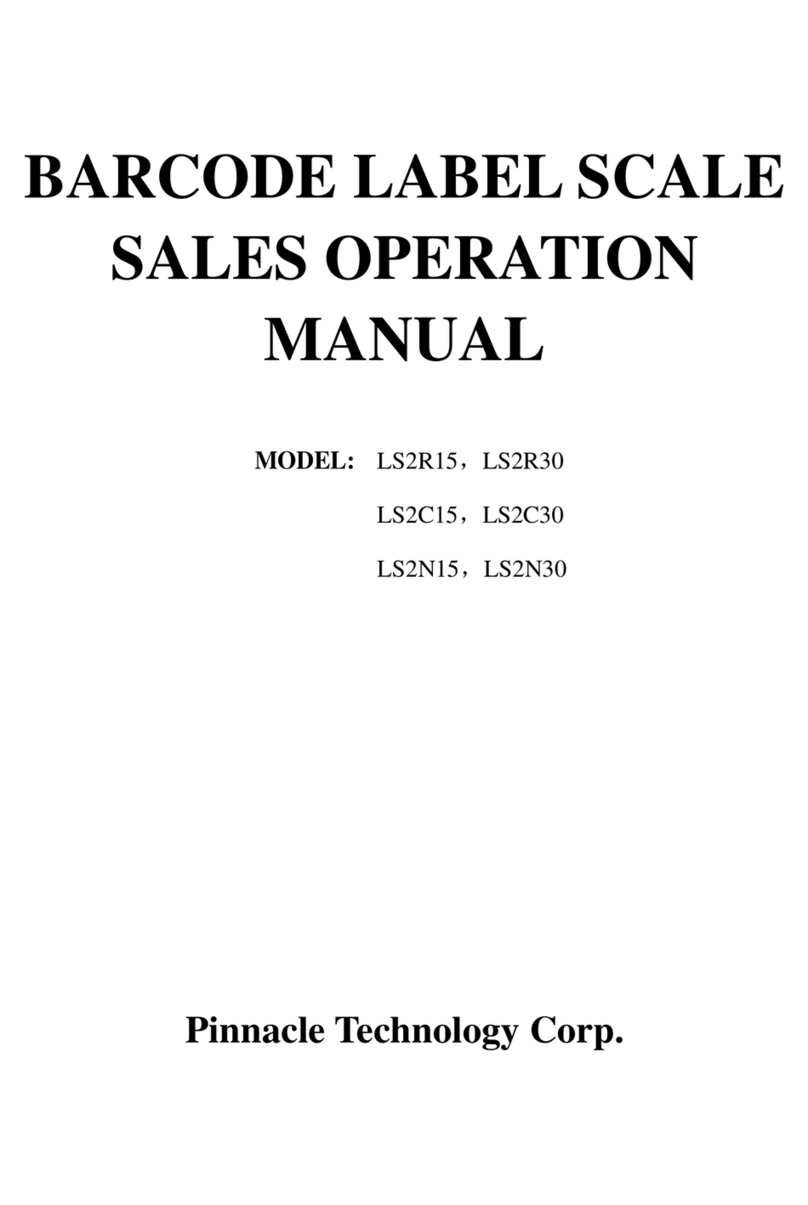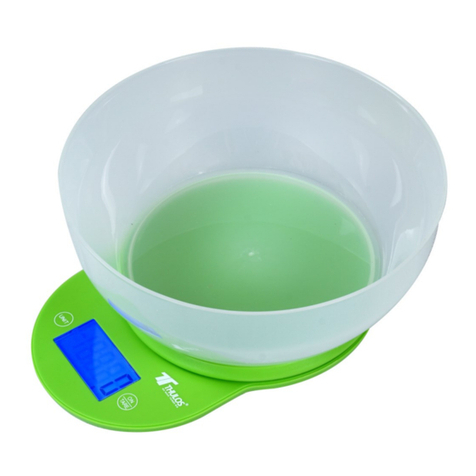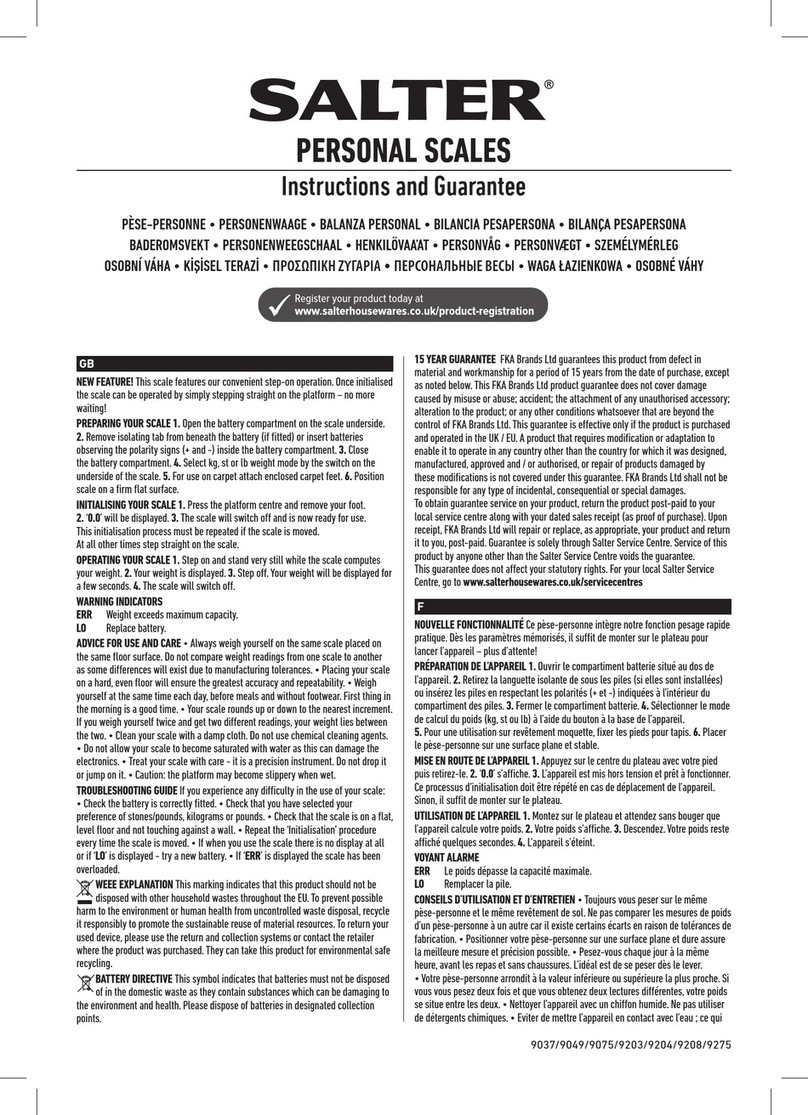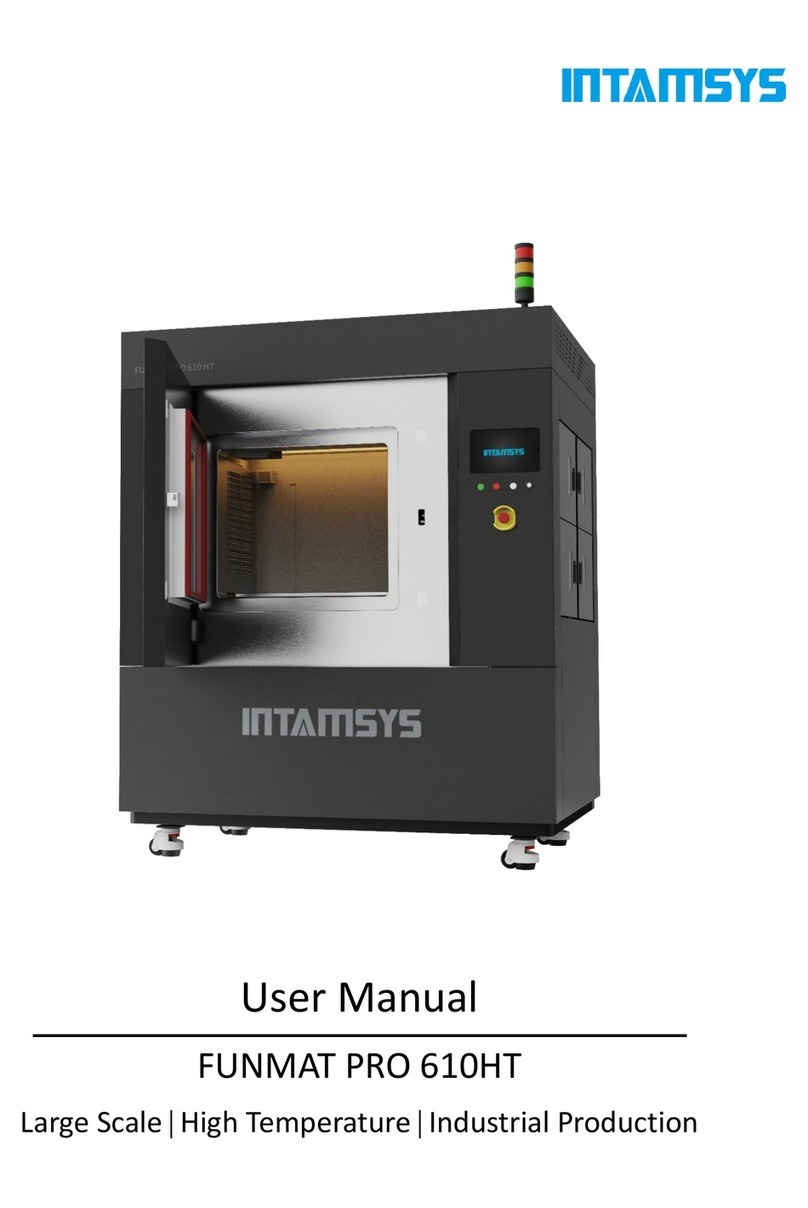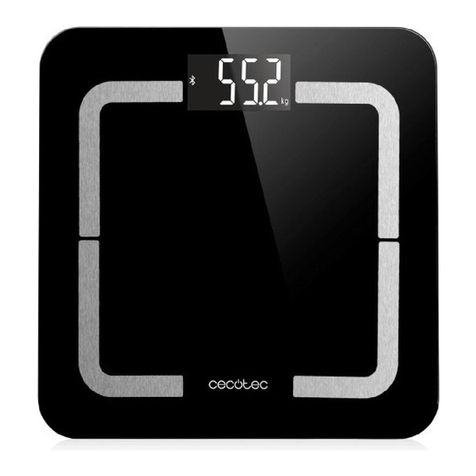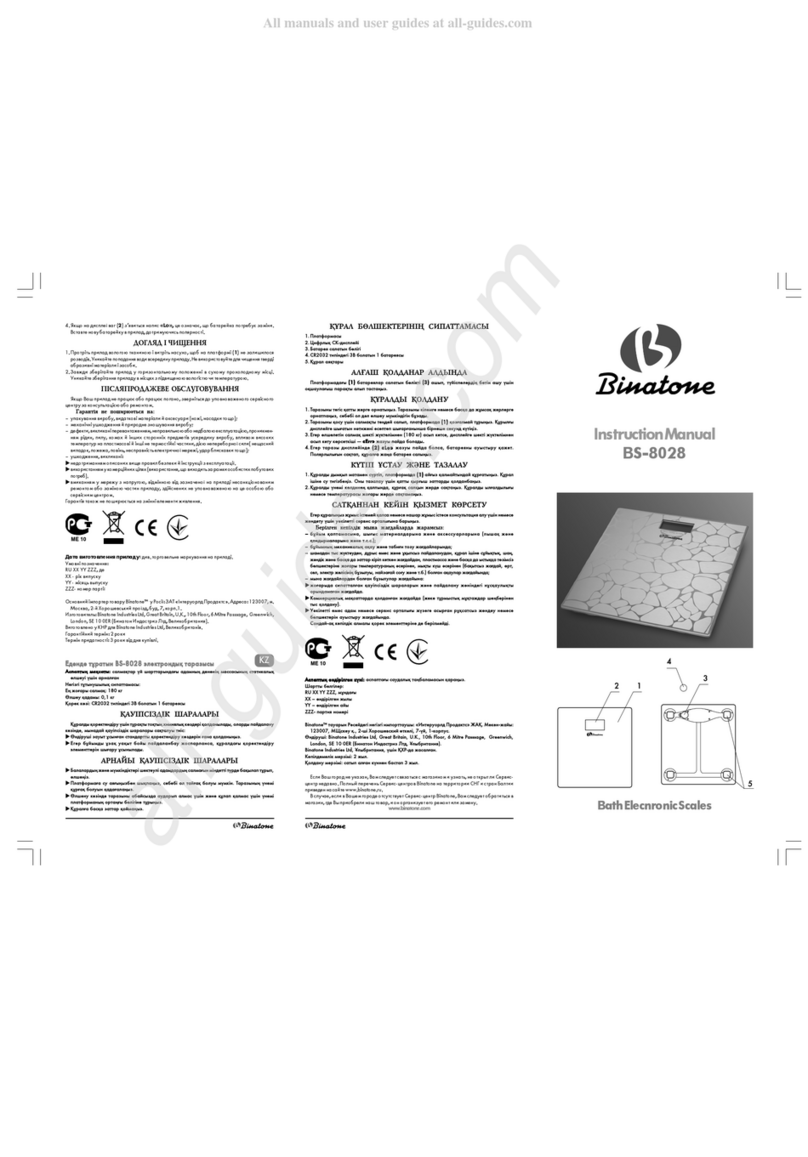
19
2. INSTALLATION AUF DEM BODEN
NOTABENE: der Wiegen Modul muss zu einem dazu bestimmten Gewichtsanzeiger verbunden sein. Die
Verbindung wird durch das Kabel der Anschlussdose und nach den Anweisungen des Anzeigers realisiert. Man
kann die elektronische Geräte, die zu den Plattformen verbunden sind, nicht kalibrieren, bevor sie zu speisen.
Der Kunde ist für die Vorbereitung und die Kalibration des Geräts verantwortlich.
Um ausführliche Information zu bekommen, im Geräts technisch-wirkenden Handbuch nachsehen.
Es ist nicht nötig die Plattform zu kalibrieren, ob sie zusammen mit dem Gerät und dem Kalibrationdienst
geliefert wird.
2.1 ÖFFNUNG DER VERPACKUNG
a) die Verpackung öffnen.
b) die eventuelle Anwesenheit von Schaden kontrollieren. Die Verpackung sollte die folgende Waren enthalten:
1 Base, 4 regulierbare Stifte, 1 Anschlussdose (innerhalb der Base), 1 Verbindungskabel und 1 Handbuch für
die Installation.
2.2 INSTALLATION UND VERBINDUNG
DIE WARNUNGEN AUF SEITE 2 RESPEKTIEREN UND ANWENDEN
Während der Einordnung der Plattform auf dem Boden, auf Bild 3 sich berufen.
Während der Einordnung der Plattform, diese Prozedur befolgen:
a) die Plattform auf eine Seite heben und die Stifte (1) auf den Zellen (2) ganz anschrauben. DIE BOLZEN NIE
ANSCHRAUBEN (3).
b) durch die Stifte (1) die Plattform einebnen solange, bis die Blase der Wasserwaage (6, im typengeprüften
Modell inbegriffen) den Mittelpunkt erreicht. Die Stabilität der Plattform ist sehr wichtig.
Alle Winkel MÜSSEN EINHEITLICH STEHEN. Dass alle die Stifte dem Boden Widerstand leisten und dass die
Plattform (auf einem Winkel geladen) nicht unbeständig ist, sorgfältig kontrollieren. Wenn ein Winkel auf dem
korrespondierenden Stift nicht steht, es leichter ist, ihn zu drehen.
c) die Kalibrierung, wenn nötig, sollte 15 Minuten nach der Zündung des Geräts ausgefahren werden.
d) die Kalibrierung des elektronischen Geräts nach der Anweisungen des technischen Handbuchs ausführen.
e) die Winkel der Plattform durch ein Probegewicht kontrollieren. Das Probegewicht wiegt ungefähr 1/3 des
höchsten Bereichs des Geräts. Das Probegewicht auf den Winkel positionieren und kontrollieren, dass der
Fehler +/- 2 Teilungen nicht übersteigt; sonst, den VERKÄUFER kontaktieren.
(Paragraph 7 sehen, ANWEISUNGEN FÜR DIE GLEICHMACHUNG DER PLATTFORMEN).
f) die Null und das full-scale durch ein Probegewicht kontrollieren.




















